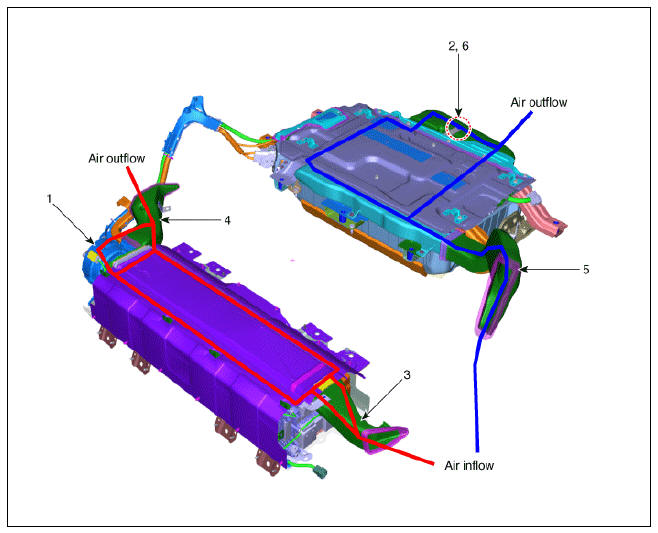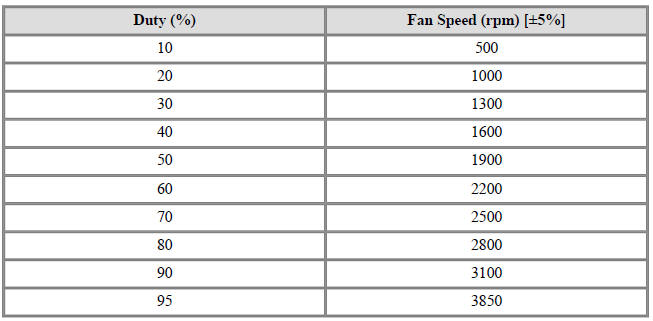KIA Niro: High Voltage Battery Cooling
Kia Niro - First generation - (DE) (2017-2022) - Service and Repair Manual / Service Highlight / High Voltage Battery Cooling
Component
Location

- Cooling Fan #1
- Cooling Fan #2
- Main High Voltage Battery Cooling Duct (Inlet)
- Main High Voltage Battery Cooling Duct (Outlet)
- Sub High Voltage Battery Cooling Duct (Inlet)
- Sub High Voltage Battery Cooling Duct (Outlet)
Specification
Current

Duty

Description
The cooling Fan consists of the main connector, the cooling fan relay and the
BLDC motor. It is
controlled by the BMS ECU PWM signal which varies with the high voltage battery
condition (9-
Speed).
READ NEXT:
 Cooling Fan - Components and components location
Cooling Fan - Components and components location
Components
Cooling Fan #1
BLDC Motor
Main Connector
Cooling Fan #2
BLDC Motor
Main Connector
Removal
Warning
Be sure to read and follow the "General Safety Information and
Caution" before doing any work re
 Cooling Fan Repair procedures
Cooling Fan Repair procedures
Installation
Warning
Be sure to read and follow the "General Safety Information and
Caution" before doing any work related with the high voltage system. Failure
to follow the safety
instructions may result in serious electrical
 Сharge port
Сharge port
Description
Location of normal charge port in the front fender of vehicle. The charge
starts when the ICCB or the
is connected to charge port.
Removal
Warning
Be sure to read and follow the "General Safety Information and
Ca
SEE MORE:
 Fuel Delivery System
Fuel Delivery System
Components
Location
Fuel Tank Assembly
Fuel tank
Fuel pump
Fuel filter
Fuel pressure regulator
Canister
Fuel tank air Filter
Fuel pressure sensor (FPS)
Fuel tank pressure sensor (FTPS)
Fuel level sensor (FLS)
Fuel tank iso
 High Pressure Fuel Pump Repair procedures
High Pressure Fuel Pump Repair procedures
Warning
In case of removing the high pressure fuel pump, high pressure fuel
pipe, delivery pipe, and injector, there may be injury
caused by leakage of the high pressure fuel. So don't do any repair work right
after engine stops.
Release th
Categories
- Home
- KIA Niro EV, Hybrid - Second generation - (SG2) (2021-2024) - Owner's manual
- Kia Niro - First generation - (DE) (2017-2022) - Service and Repair Manual
- Contact Us
